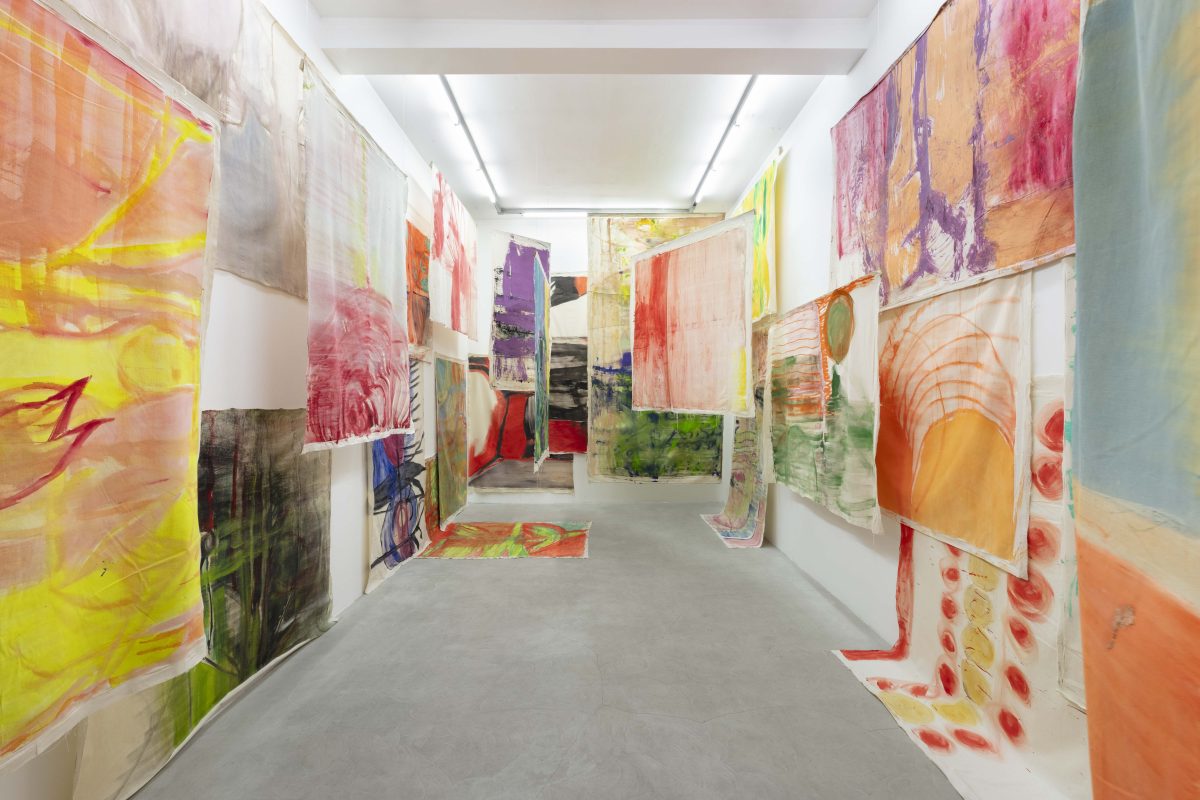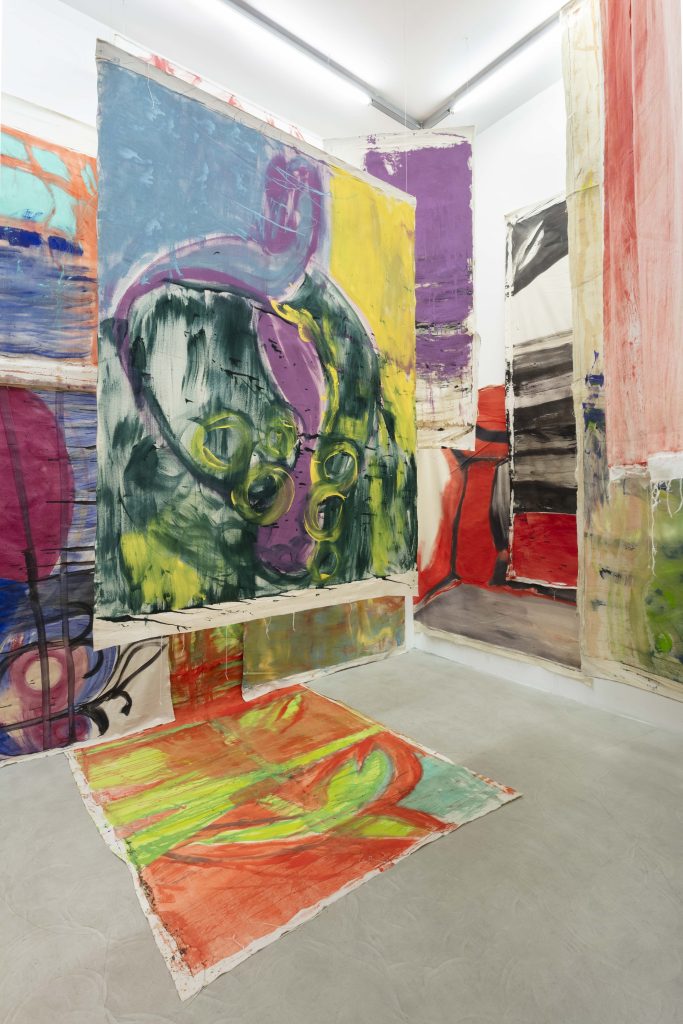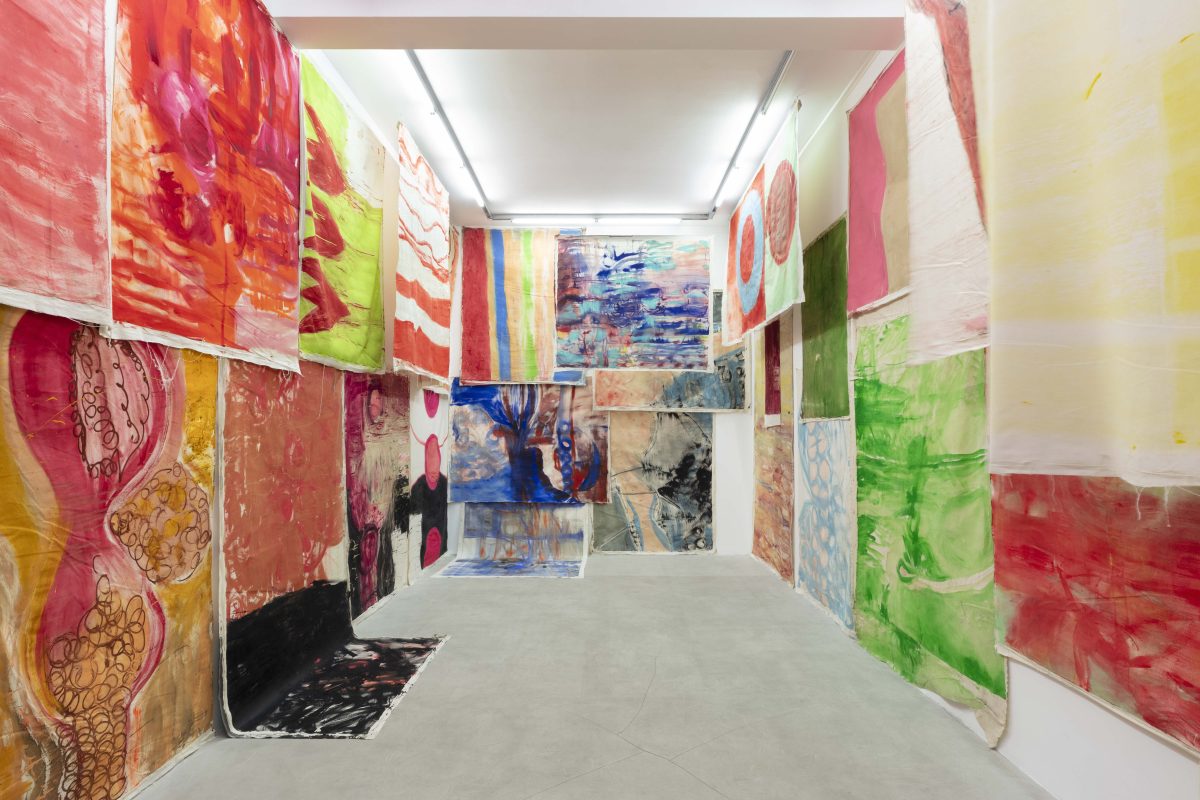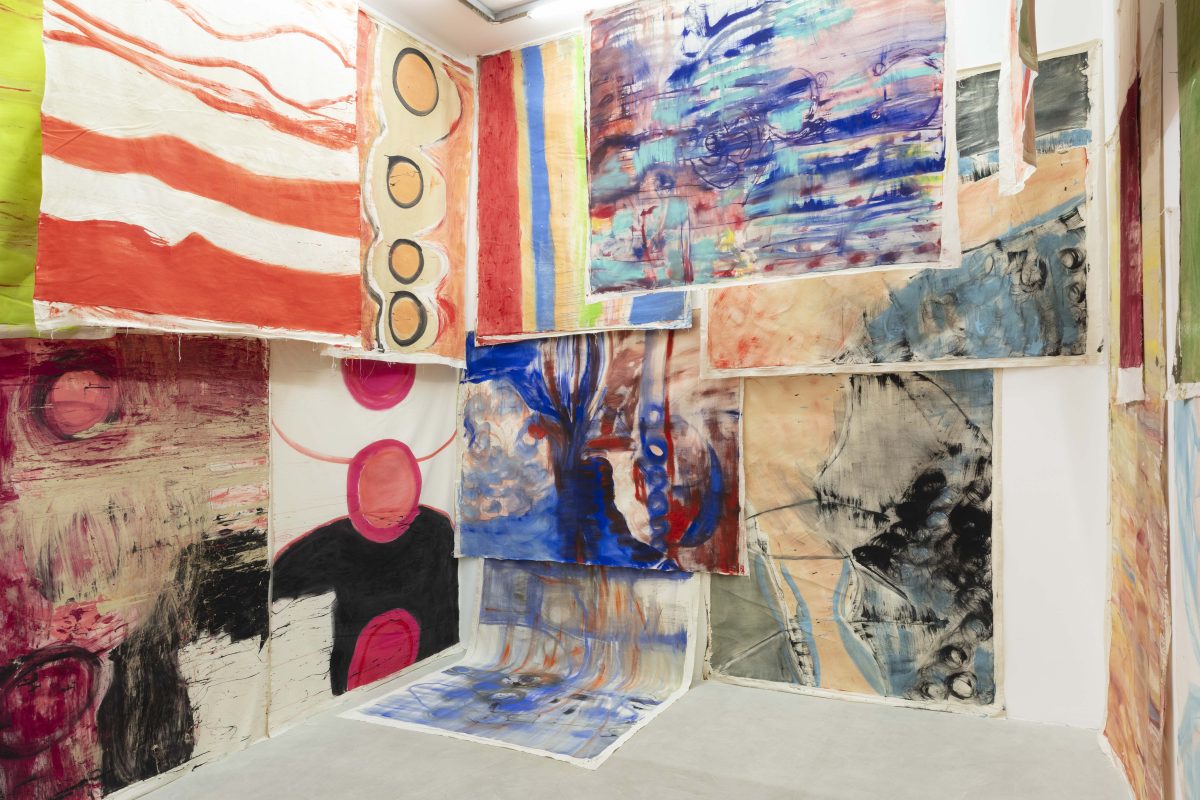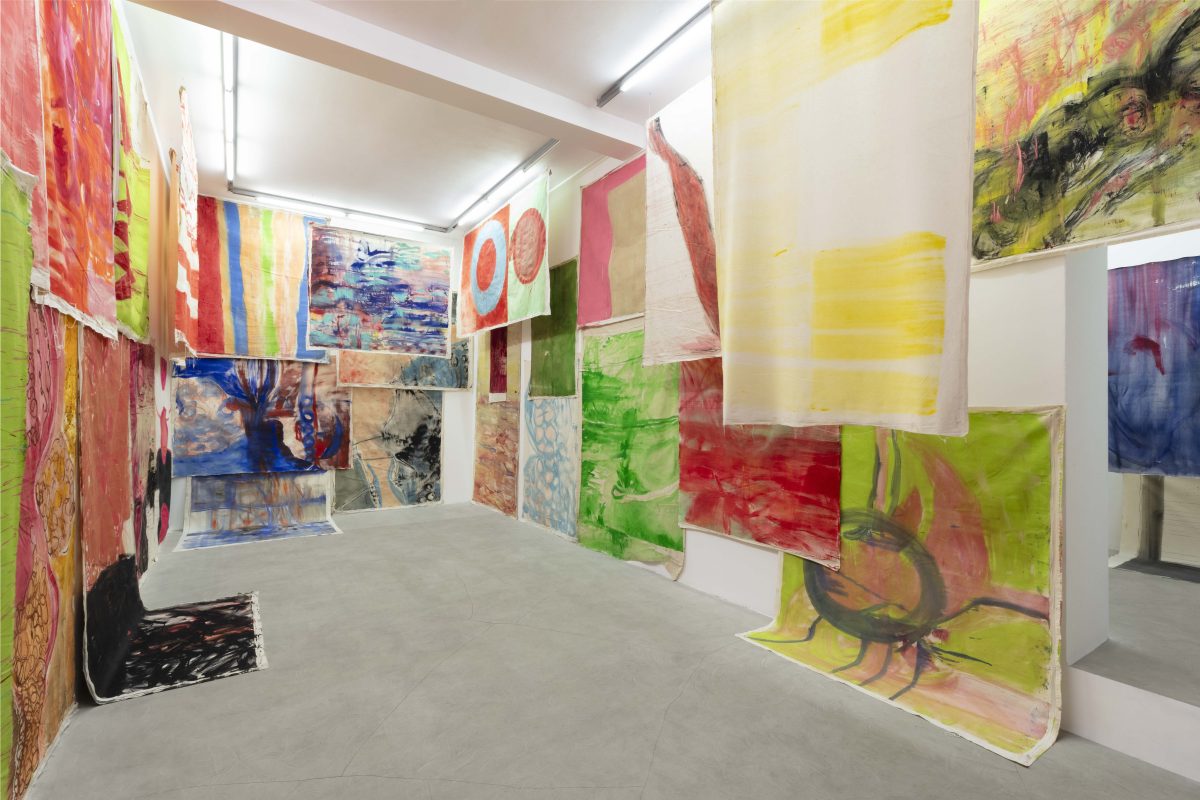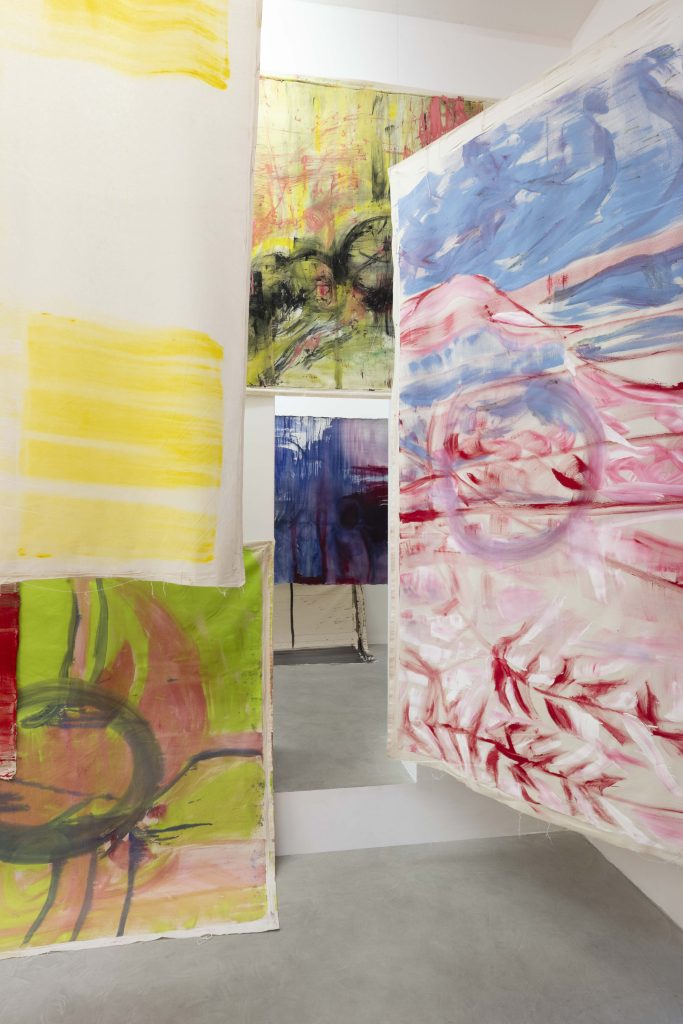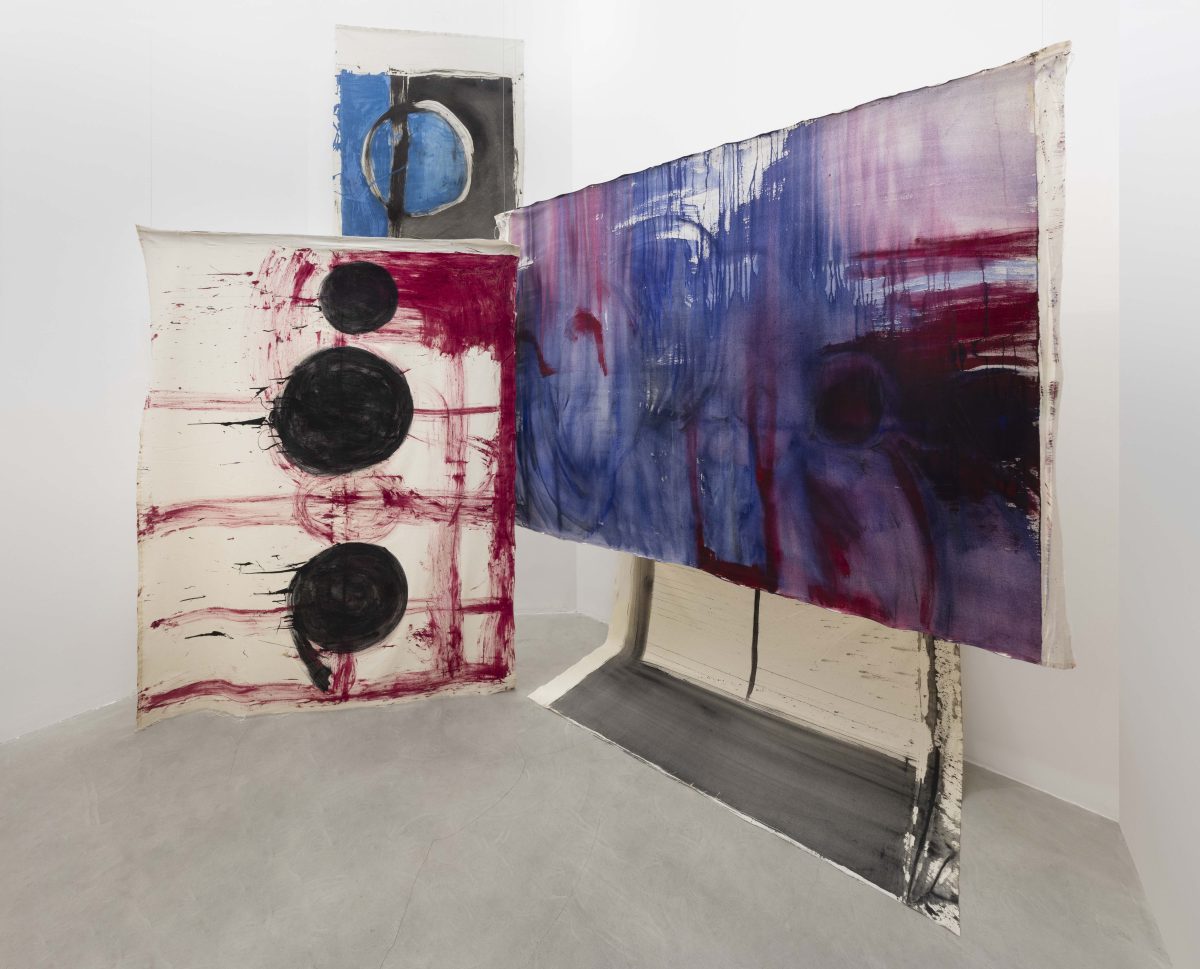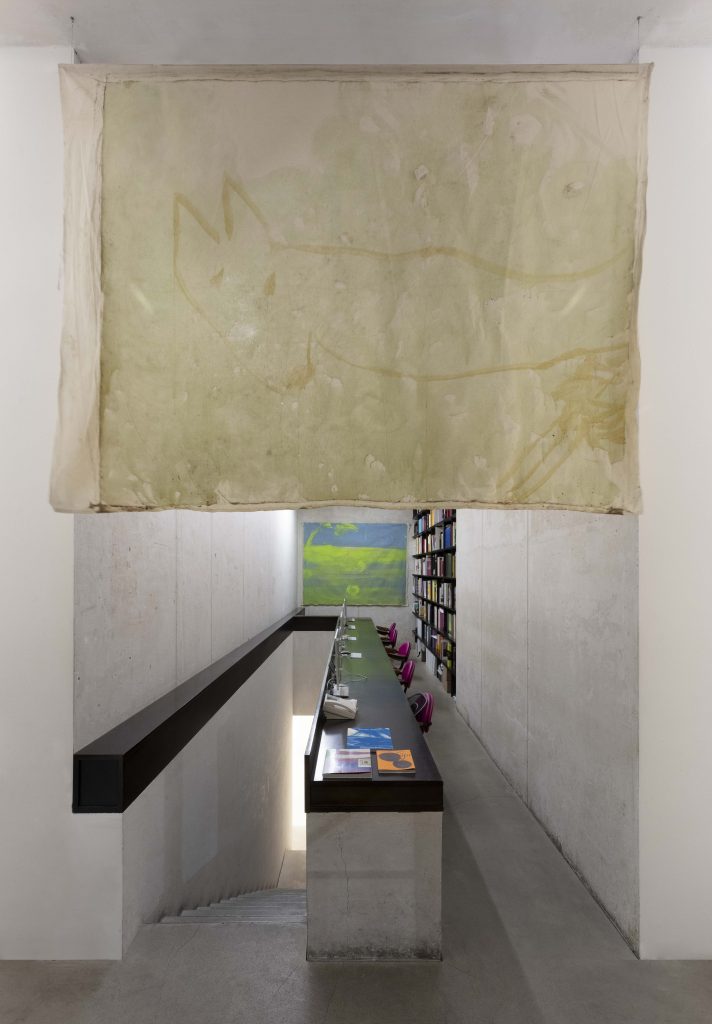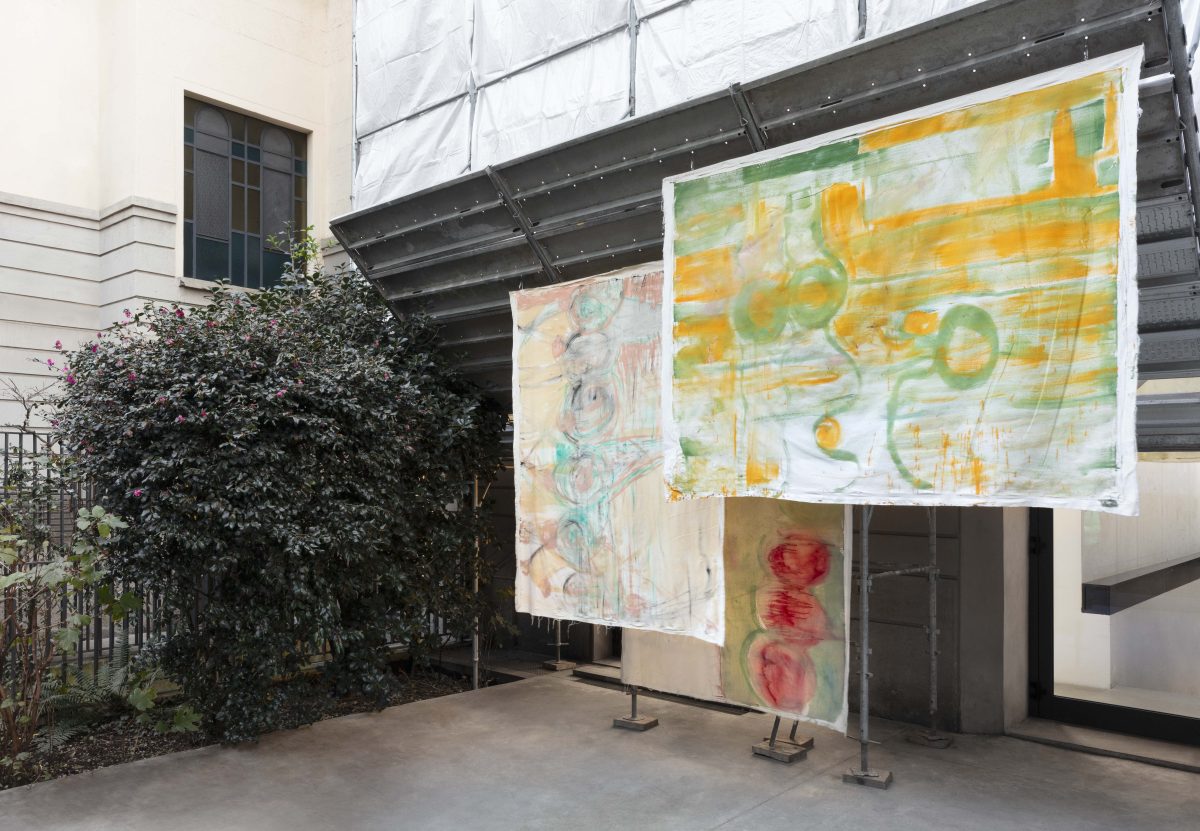
- This event has passed.
kaufmann repetto is pleased to announce Vivian Suter’s exhibition Tintin Nina Disco, including more than fifty large scale works resulting from the artist’s decades-long research immersed in the lush Guatemalan rainforest. This series of canvases epitomizes Suter’s creative alliance with the vicissitudes of terrain and weather, introducing us to the incessant rhapsody of nature and its deep connection with the artist’s practice. This resonates also in the fluid, non-hierarchical presentation of the works, often overlapping, suspended and swaying in the space, absorbed in the ecosystem and spirit of the artist’s surroundings.
Vivian Suter was born in Buenos Aires, Argentina, in 1949, from Austrian migrants. When the government threatened to take over their business in the sixties, the family moved to Basel, Switzerland, where Vivian Suter studied before departing on a long series of journeys through Europe, Africa, the Middle East and Asia. During her travels she made collages, drawings, sculptures and took photographs along the way, and since her early works, one could notice how rooted the idea of pilgrimage, movement and change was in her practice. As soon as her career began to take off she moved once again, far from the spotlight of the European art scene.
Vivian Suter has been living in a house she built on a former coffee plantation, near the lake on the slopes of Panajachel, Guatemala, since the eighties. Her art, which has always breathed and embodied the contexts in which she worked, was formed as an act of mapping, marking and naming her surroundings. The tropical rainforest is, in fact, an active character in the plethora of conditions that contribute to the genesis of the artwork. The canvases carry traces of their environment: rain water and mud stains, scratches from the tree branches, and even some paw prints of Tintin, Nina or Disco, the beloved dogs that roam in Suter’s open air studio.
The rich colors that are abstractly painted on the canvases recall pristine water bodies, butterfly patterns, foggy sunlight. Vivian Suter’s pictorial intervention always reveals a beautiful collaboration with the context she lives in, and her artworks aim to transform the environment of every exhibition space they inhabit. The surface of the painting serves as a testimony for nature’s morphing – the canvas is a precarious living material, and, other than representing nature, the artist witnesses its gradual decay and its vibrant regeneration. This approach towards the materiality of the unframed canvas imposes a shift in appreciation for the object’s preciousness.
Adam Szymczyk, who included Suter in both his Athens and Kassel setting for documenta 14, writes about the artist’s radical perspective in his essay Against the Evil Eye:
“Thus, nature – itself the lure for and source of colonialism, its raw material extracted by both the culture and industry of colonizers – serves as a respectful, protective cover that prevents looting and looking and alleviates the effects of the “evil eye” elsewhere called the colonial gaze.”¹
It seems like whenever Suter’s works are shown in an exhibition space, the circular process of the painting’s coming into being briefly interrupts, conceding a moment gratitude and awe for nature’s unstoppable, never-ending flow, as the object’s final purpose is to be swallowed back into the elements that made it.
¹Adam Szymczyk, Against the Evil Eye: Vivian Suter’s Intrepid Painting in Vivian Suter, The Power Plant Toronto, Hatje Cantz Verlag, Berlin, 2019
kaufmann repetto è lieta di annunciare Tintin Nina Disco, mostra personale di Vivian Suter con oltre cinquanta opere di grandi dimensioni frutto della pluridecennale ricerca immersiva dell’artista nella lussureggiante foresta pluviale guatemalteca. Questa serie di tele incarna l’alleanza creativa di Suter con le vicissitudini climatiche e territoriali, presentando la costante rapsodia della natura e il suo intimo legame con la pratica dell’artista. Legame che ritorna nella presentazione fluida e non gerarchica delle opere, spesso sovrapposte, sospese e ondeggianti nello spazio, immerse nell’ecosistema e nello spirito dell’ambiente in cui l’artista vive
Vivian Suter è nata a Buenos Aires, Argentina, nel 1949, da immigrati austriaci. Quando negli anni Sessanta il governo minacciò di espropriarne l’attività, la famiglia si trasferì in Svizzera, a Basilea, dove Vivian Suter compì gli studi prima di imbarcarsi in una lunga serie di viaggi attraverso Europa, Africa, Medio Oriente e Asia. Durante i suoi viaggi eseguì collage, disegni, sculture e scattò fotografie, e fin dai suoi primi lavori si può apprezzare quanto il peregrinare, il movimento e il cambiamento siano concetti radicati nella sua pratica. Non appena la sua carriera cominciò a decollare, Suter si trasferì ancora, lontano dai riflettori della scena artistica europea.
Dagli anni Ottanta vive in una casa da lei costruita in una ex piantagione di caffè, sulle pendici di Panajachel in riva al lago Atitlán, Guatemala. La sua arte, che ha sempre respirato e incarnato il contesto in cui lei operava, si è sviluppata come un’azione di mappatura che contrassegna e nomina l’ambiente circostante; ed effettivamente la foresta tropicale è un soggetto attivo nella pletora di condizioni che contribuiscono alla genesi della sua opera. Le tele recano tracce dell’ambiente: acqua piovana e macchie di fango, graffi provocati da rami di alberi, addirittura impronte delle zampe di Tintin, Nina o Disco, gli amati cani che scorrazzano nello studio all’aperto di Suter.
I colori vivaci delle opere ricordano acque incontaminate, forme di farfalle, luce che filtra tra le nebbie. L’intervento pittorico di Vivian Suter disvela sempre un’incantevole collaborazione tra il contesto in cui vive e l’obiettivo che le sue opere hanno di modificare gli spazi espositivi da esse popolati. La superficie delle tele funge da testimone della trasformazione della natura – la tela è un materiale vivente precario e, oltre a rappresentare la natura, l’artista ne testimonia il decadimento graduale e la dinamica rigenerazione. Tale approccio nei confronti della pittura impone una nuova comprensione dell’opera, che porta infine a una rivalutazione della sua matericità. A proposito della prospettiva radicale dell’artista, Adam Szymczyk, che ha incluso Suter in entrambi le sedi di Atene e Kassel per documenta 14, scrive nel suo saggio Against the Evil Eye:
“In tal modo la natura – essa stessa richiamo e fonte di colonialismo, le sue materie prime estratte da entrambe cultura e industria dei colonizzatori – funge da riparo rispettoso e protettivo che impedisce saccheggio e ricerca, e allevia gli effetti del ‘malocchio’, altrimenti detto sguardo coloniale”¹.
È come se ogni volta che le opere di Suter vengono presentate in uno spazio espositivo, il processo circolare del venire in essere della pittura si interrompesse brevemente, concedendo un momento di gratitudine e stupore verso il flusso inarrestabile e infinito della natura, dato che il fine ultimo dell’oggetto è quello di essere riassorbito negli elementi che lo costituiscono.
¹Adam Szymczyk, Against the Evil Eye: Vivian Suter’s Intrepid Painting in Vivian Suter, The Power Plant Toronto, Hatje Cantz Verlag, Berlin, 2019

